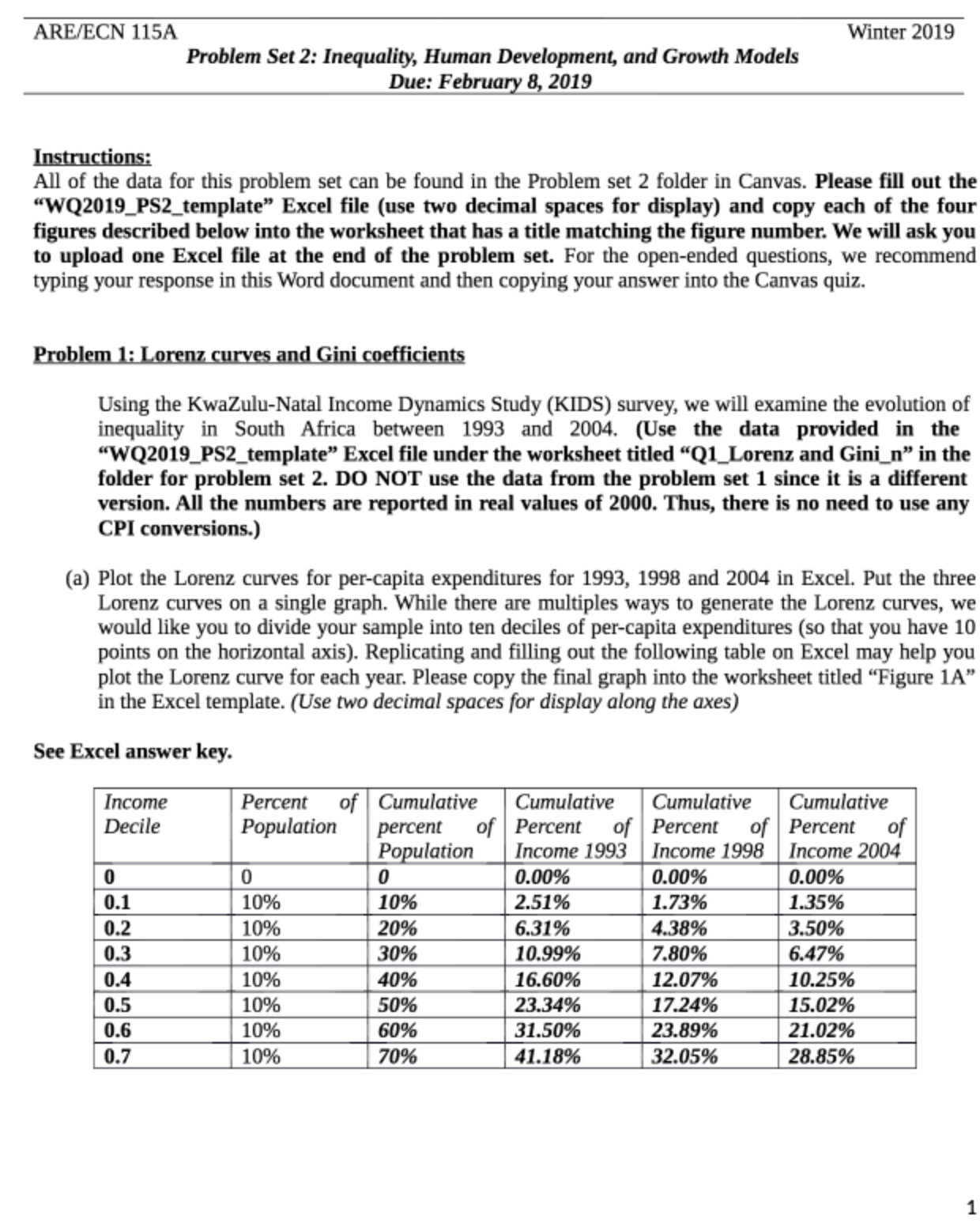How do you find cumulative percent of income 1993? 1998? 2004?
ARE/ECN 115A Winter 2019 Problem Set 2: Inequality, Human Development, and Growth Models Due: February 8, 2019 Instructions: All of the data for this problem set can be found in the Problem set 2 folder in Canvas. Please fill out the "WQ2019_PS2_template" Excel file (use two decimal spaces for display) and copy each of the four figures described below into the worksheet that has a title matching the figure number. We will ask you to upload one Excel file at the end of the problem set. For the open-ended questions, we recommend typing your response in this Word document and then copying your answer into the Canvas quiz. Problem 1: Lorenz curves and Gini coefficients Using the KwaZulu-Natal Income Dynamics Study (KIDS) survey, we will examine the evolution of inequality in South Africa between 1993 and 2004. (Use the data provided in the "WQ2019_PS2_template" Excel file under the worksheet titled "Q1_Lorenz and Gini_n" in the folder for problem set 2. DO NOT use the data from the problem set 1 since it is a different version. All the numbers are reported in real values of 2000. Thus, there is no need to use any CPI conversions.) (a) Plot the Lorenz curves for per-capita expenditures for 1993, 1998 and 2004 in Excel. Put the three Lorenz curves on a single graph. While there are multiples ways to generate the Lorenz curves, we would like you to divide your sample into ten deciles of per-capita expenditures (so that you have 10 points on the horizontal axis). Replicating and filling out the following table on Excel may help you plot the Lorenz curve for each year. Please copy the final graph into the worksheet titled "Figure 1A' in the Excel template. (Use two decimal spaces for display along the axes) See Excel answer key. Income Percent of Cumulative Cumulative Cumulative Cumulative Decile Population percent of Percent of Percent of Percent Population Income 1993 Income 1998 Income 2004 of 0 0 0 0.00% 0.00% 0.00% 0.1 10% 10% 2.51% 1.73% 1.35% 0.2 10% 20% 6.31% 4.38% 3.50% 0.3 10% 30% 10.99% 7.80% 6.47% 0.4 10% 40% 16.60% 12.07% 10.25% 0.5 10% 50% 23.34% 17.24% 15.02% 0.6 10% 60% 31.50% 23.89% 21.02% 0.7 10% 70% 41.18% 32.05% 28.85%0.8 10% 80% 53.19% 42.38% 40.08% 0.9 10% 90% 68.38% 58.31% 56.38% 1 10% 100% 100.00% 100.00% 100.00% (b) Based on your Lorenz curves, briefly explain what you conclude about the evolution of inequality in South Africa








